Stuffing balls are a delicious and convenient twist on traditional stuffing, offering a fun, portioned alternative that’s perfect for holiday dinners. Made with classic stuffing ingredients like bread mix, aromatic vegetables, and savory seasonings, these bite-sized delights bring all the comforting flavors of stuffing but with a crispy outer texture that’s simply irresistible. Unlike traditional stuffing, which is often baked inside a turkey or spread in a casserole dish, stuffing balls are individually shaped, making them an ideal, easy-to-serve side that’s both versatile and portable.
These stuffing balls have become a holiday favorite because they cater to varied tastes and dietary preferences. They work well alongside mains like turkey, ham, or roast beef, making them a crowd-pleaser at gatherings like Thanksgiving and Christmas. With their bite-sized form, stuffing balls offer a charming presentation and ensure everyone gets a perfect portion, helping to create memorable holiday meals and adding a festive touch to the dinner table.
Ingredients and Preparation
This stuffing balls recipe brings together simple yet flavorful ingredients that create the perfect balance of taste and texture, making it a must-have on any holiday menu.
- Dry Stuffing Mix: This mix forms the base of the recipe, giving the stuffing balls a flavorful, bread-like texture. Using a pre-seasoned mix helps cut down on prep time while adding depth to the dish.
- Chicken Broth: Adding chicken broth gives moisture to the stuffing mix, keeping the balls from drying out and infusing them with a rich, savory taste.
- Unsalted Butter: Melted butter enriches the stuffing, adding a luxurious flavor and aiding in binding the ingredients together.
- Eggs: The beaten eggs act as a binder, holding the ingredients together and helping the stuffing balls maintain their shape while baking.
- Onion and Celery: These chopped vegetables introduce a classic stuffing flavor profile, adding both sweetness from the onion and a crunchy texture from the celery.
- Poultry Seasoning, Salt, and Pepper: Poultry seasoning brings a mix of herbs like sage, thyme, and rosemary that make the stuffing balls aromatic and festive. Salt and pepper enhance the flavor balance.
- Fresh Parsley: Used as a garnish, parsley adds a pop of color and a fresh, subtle flavor that complements the richness of the stuffing.
Ingredient Variations: To make this recipe vegetarian, swap the chicken broth with vegetable broth. For extra flavor, you could add cooked sausage or diced apples for a hint of sweetness, making the stuffing balls even more special.
Step-by-Step Instructions for Making Stuffing Balls
1. Preheat the Oven
Preheat your oven to 350°F (175°C) to ensure that the stuffing balls bake evenly and reach the perfect texture. Preheating is crucial because it provides consistent heat from the start, which helps in achieving a crispy outer layer. Line a baking sheet with parchment paper to prevent the stuffing balls from sticking and make cleanup much easier. The parchment also ensures even browning, so each ball has a delightful texture.
2. Combine Ingredients
In a large mixing bowl, start by adding the dry stuffing mix, then pour in the chicken broth and melted butter. Use a spoon or spatula to stir thoroughly, ensuring that the stuffing absorbs the moisture evenly. The mixture should be well-moistened but not overly wet, so it holds together without crumbling. The chicken broth and butter combination keeps the stuffing balls rich and moist, and stirring well is essential for an even texture throughout. Take your time here to make sure the mixture is consistent and smooth.
3. Add Seasonings and Vegetables
Next, incorporate the beaten eggs, finely chopped onion, celery, poultry seasoning, salt, and pepper. Stir gently but thoroughly to distribute the ingredients evenly. The eggs play a key role in binding the stuffing mixture, so ensure they are mixed throughout. The consistency should be just sticky enough to hold its shape when squeezed; if the mixture feels too dry, add a bit more broth until it holds. Mixing the vegetables and seasonings evenly is important for achieving a balanced flavor and texture in each stuffing ball.
4. Forming the Stuffing Balls
Using your hands or a spoon, scoop portions of the mixture and shape them into golf-ball-sized rounds. Aim for uniform sizes to ensure they bake evenly. Place each ball on the prepared baking sheet, leaving a bit of space between them to promote even browning on all sides.
5. Baking the Stuffing Balls
Bake the stuffing balls in the preheated oven for 20-25 minutes, or until they are golden brown and slightly firm to the touch. Adjust the baking time as needed based on your oven’s performance; if they’re not browning evenly, rotate the sheet halfway through. Look for a light golden hue as a cue for doneness.
6. Garnishing and Serving
Once baked, remove the stuffing balls from the oven and let them cool slightly. Garnish with freshly chopped parsley for a bright pop of color and subtle flavor. Serve these stuffing balls warm as an appealing side dish that adds a festive touch to your holiday spread.
Tips for Perfect Stuffing Balls
Creating perfect stuffing balls requires a balance of moisture, flavor, and preparation. Here are some tips to help you make sure they turn out moist, flavorful, and cohesive, while also exploring ways to add extra flair.
Ensuring Moisture and Consistency
To prevent your stuffing balls from becoming too dry, use just the right amount of broth. The mixture should be moist enough to hold together but not so wet that it’s mushy. If the stuffing mix absorbs too much liquid, add a bit more broth gradually until it reaches the right consistency. Including melted butter not only enriches the flavor but also adds moisture, which is key for achieving a tender texture. The eggs play an important role here too, as they act as a binder to hold the ingredients together without making the stuffing balls overly dense.
Preparing in Advance
Stuffing balls can be made ahead, making holiday meal prep much easier. If you want to prepare the balls a day or two before serving, shape them and place them on a baking sheet, then cover tightly with plastic wrap or foil. Store them in the refrigerator until you’re ready to bake. You can also freeze unbaked stuffing balls by placing them on a baking sheet until they’re frozen solid, then transferring them to an airtight container or freezer bag. This way, you can bake them directly from frozen, just adding a few extra minutes to the baking time.
For baked stuffing balls, let them cool completely, then store in an airtight container in the refrigerator for up to three days. To reheat, place them on a baking sheet and warm in the oven at 325°F (165°C) until heated through, which keeps them from getting soggy and preserves their crisp outer texture.
Reheating Tips
To keep stuffing balls fresh and flavorful when reheating, avoid the microwave, as it can make them mushy. Instead, use the oven at a low temperature (325°F) to gently heat them until warmed through. This method helps retain their crispiness on the outside while keeping the interior moist.
Potential Add-Ins for Extra Flavor
Stuffing balls are versatile, and you can easily add ingredients to give them a personal touch. For a savory boost, consider adding cooked, crumbled sausage or bacon. For a touch of sweetness and texture, mix in dried cranberries or raisins. Chopped nuts, such as walnuts or pecans, add a delightful crunch, while fresh herbs like rosemary, thyme, or sage bring an aromatic depth. These additions can make your stuffing balls unique, adding layers of flavor that complement the traditional holiday spread.
Serving Suggestions and Pairings
Stuffing balls make a delightful and versatile addition to any holiday meal, pairing well with a variety of main dishes and sides that elevate their flavors.
Suggested Main Courses
Classic holiday meats like roast turkey, baked ham, or prime rib are ideal companions for stuffing balls. The savory, herbaceous flavor of the stuffing complements the rich, hearty taste of these meats, creating a balanced and satisfying plate. For a lighter option, consider pairing them with roast chicken or pork tenderloin, as the stuffing adds warmth and flavor without overwhelming the main.
Additional Sides and Accompaniments
To round out the meal, serve stuffing balls with gravy for added moisture and flavor. Cranberry sauce adds a sweet-tart contrast that brightens up the plate, while roasted vegetables like carrots, Brussels sprouts, or green beans bring texture and color. For extra richness, a side of mashed potatoes or sweet potato casserole provides comforting flavors that complement the stuffing balls, making for a memorable holiday spread.
Frequently Asked Questions (FAQs)
Can I use homemade stuffing instead of dry stuffing mix?
Yes, you can use homemade stuffing in place of dry stuffing mix. Prepare your stuffing recipe as usual, then allow it to dry out slightly so it doesn’t add excess moisture. Skip or reduce the chicken broth to avoid overly wet stuffing balls, and adjust seasonings to taste since homemade stuffing may already have flavors incorporated.
How can I make these stuffing balls vegetarian?
To make these stuffing balls vegetarian, substitute vegetable broth for chicken broth and use plant-based butter instead of traditional butter. This keeps the same savory flavor while making the dish suitable for vegetarians.
Can I freeze stuffing balls for later?
Yes, stuffing balls freeze well. For unbaked balls, place them on a baking sheet to freeze, then transfer to a container. Bake from frozen, adding a few extra minutes to the baking time. For baked balls, let them cool, then freeze. Reheat in the oven at 325°F to maintain their texture.
How do I prevent the stuffing balls from falling apart?
To ensure the stuffing balls hold together, ensure they have enough moisture and a proper binding agent like eggs. The mixture should be sticky but not wet. Add more broth gradually if needed, but avoid over-soaking.
What are some creative add-ins for this recipe?
For extra flavor, try adding cooked sausage, shredded cheese, or dried cranberries. Fresh herbs like sage or rosemary also add aromatic depth, making the stuffing balls unique and flavorful.
Can I make stuffing balls gluten-free?
Yes, you can make this recipe gluten-free by using a gluten-free stuffing mix. Be sure to check all other ingredients, like broth, to confirm they are gluten-free as well.
How many stuffing balls does this recipe make?
This recipe generally yields around 12-15 stuffing balls, depending on their size. For a larger group, you can easily double or triple the ingredients.
Can I add cheese to the stuffing balls?
Absolutely! Adding shredded cheese, like cheddar or Parmesan, can give a delicious, melty texture. Mix the cheese into the stuffing mixture before shaping the balls for best results.
Are stuffing balls suitable for kids?
Yes, stuffing balls are kid-friendly and easy to portion. For a milder flavor, you can reduce or omit the poultry seasoning, or add a little grated cheese for added appeal.
What’s the best way to store leftovers?
Store leftover stuffing balls in an airtight container in the refrigerator for up to 3 days. Reheat them in the oven at 325°F (165°C) for 10-15 minutes to preserve their texture.
Troubleshooting Common Issues
Dryness: If the stuffing balls turn out dry, they may not have enough broth. Next time, gradually add broth until the mixture is moist. Adding a little extra butter can also help retain moisture.
Balls Falling Apart: If your stuffing balls are crumbling, it’s likely due to insufficient binding. Make sure the eggs are well incorporated, as they hold the mixture together. If the mix is still crumbly, add a bit more egg or broth.
Uneven Cooking: Uneven browning may result from improper spacing or an uncalibrated oven. Be sure to leave space between each ball on the baking sheet. Rotate the baking sheet halfway through cooking for even heat distribution.
Too Wet or Dry Mixture: If the mixture is too wet, add a bit more dry stuffing mix to absorb the excess moisture. If it’s too dry, add small amounts of broth until the mixture holds together without crumbling.
Nutritional Information and Health Tips
Stuffing balls are a flavorful holiday side, typically containing calories from carbs in the stuffing mix, fats from butter and eggs, and some protein. On average, each stuffing ball may contain around 100-150 calories, depending on the ingredients used. To make the recipe lighter, consider reducing the butter or substituting with olive oil for a heart-healthier fat. Using a whole-grain stuffing mix can add fiber, making the dish more filling and nutritious. For a lower-calorie version, swap chicken broth with a low-sodium or vegetable-based option to cut back on sodium without sacrificing flavor.
Print
Stuffing Balls
- Author: Christophe
Description
These savory stuffing balls are a delicious twist on traditional stuffing, perfect as a side dish for Thanksgiving or any holiday meal! They’re easy to serve, flavorful, and make for great leftovers.
Ingredients
- 4 cups dry stuffing mix
- 1 cup chicken broth
- ½ cup unsalted butter, melted
- 2 eggs, beaten
- 1 small onion, finely chopped
- ½ cup celery, finely chopped
- 1 teaspoon poultry seasoning
- Salt and pepper, to taste
- Fresh parsley, chopped, for garnish
Instructions
1️⃣ Preheat the oven: Set the oven to 350°F (175°C). Line a baking sheet with parchment paper to prevent sticking and ensure easy cleanup.
2️⃣ Combine ingredients: In a large bowl, add the dry stuffing mix, then pour in the chicken broth and melted butter. Stir until the mixture is well moistened.
3️⃣ Add seasonings and vegetables: Mix in the beaten eggs, finely chopped onion, celery, poultry seasoning, salt, and pepper. Stir until all ingredients are well combined and the mixture holds together.
4️⃣ Form stuffing balls: Scoop and shape the mixture into golf ball-sized portions. Place each ball on the prepared baking sheet, leaving some space between them to allow for even baking.
5️⃣ Bake: Place the baking sheet in the preheated oven and bake for 20-25 minutes, or until the stuffing balls are golden brown and slightly firm to the touch.
6️⃣ Garnish and serve: Remove from the oven and let cool slightly. Garnish with fresh chopped parsley for a pop of color, then serve warm.
Notes
- Make Ahead: Prepare and shape the stuffing balls a day ahead, then refrigerate. Simply bake them fresh on the day of serving.
- Additions: For extra flavor, try adding finely chopped apples, sausage, or cranberries to the mixture.
- Leftovers: Store leftover stuffing balls in an airtight container in the refrigerator for up to 3 days. Reheat in the oven for best results.


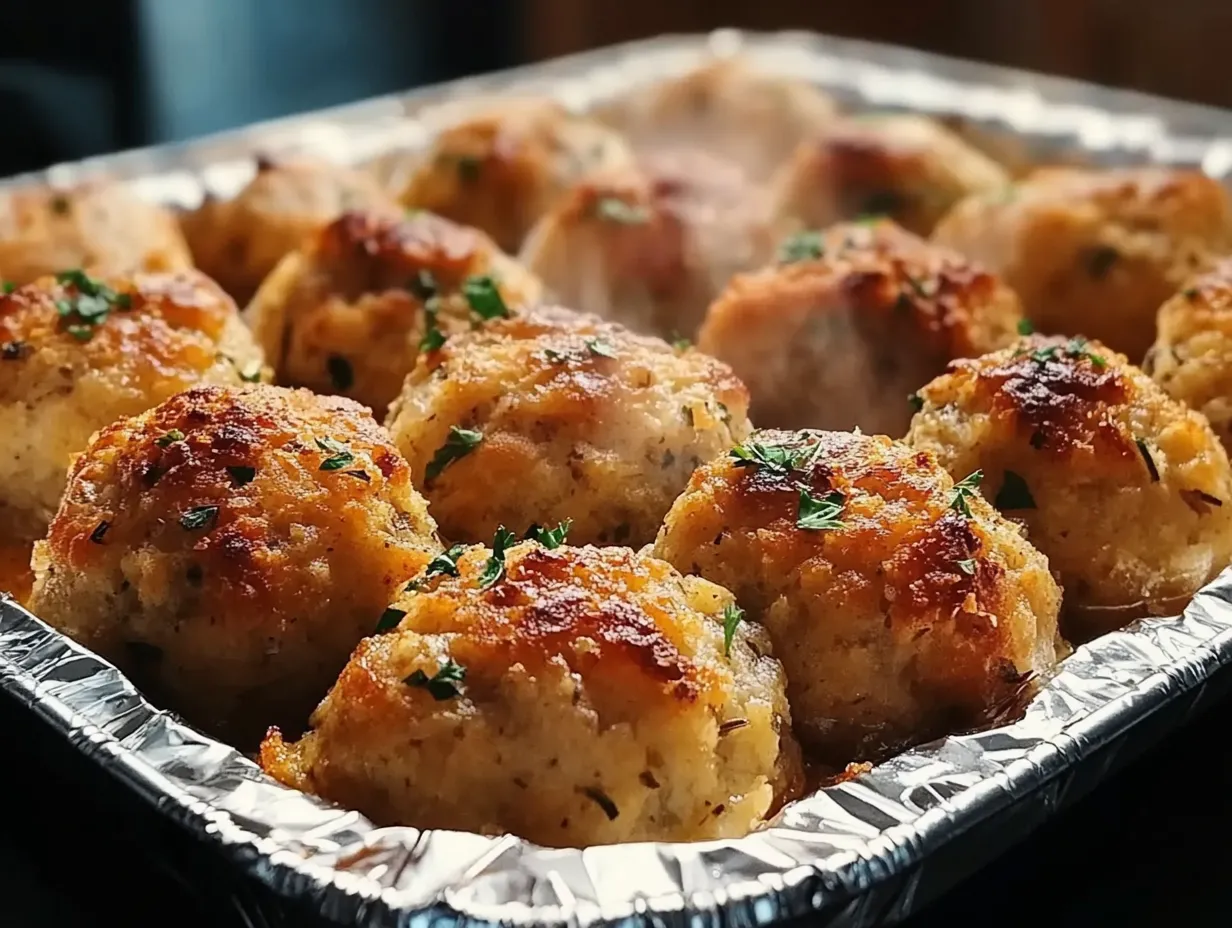
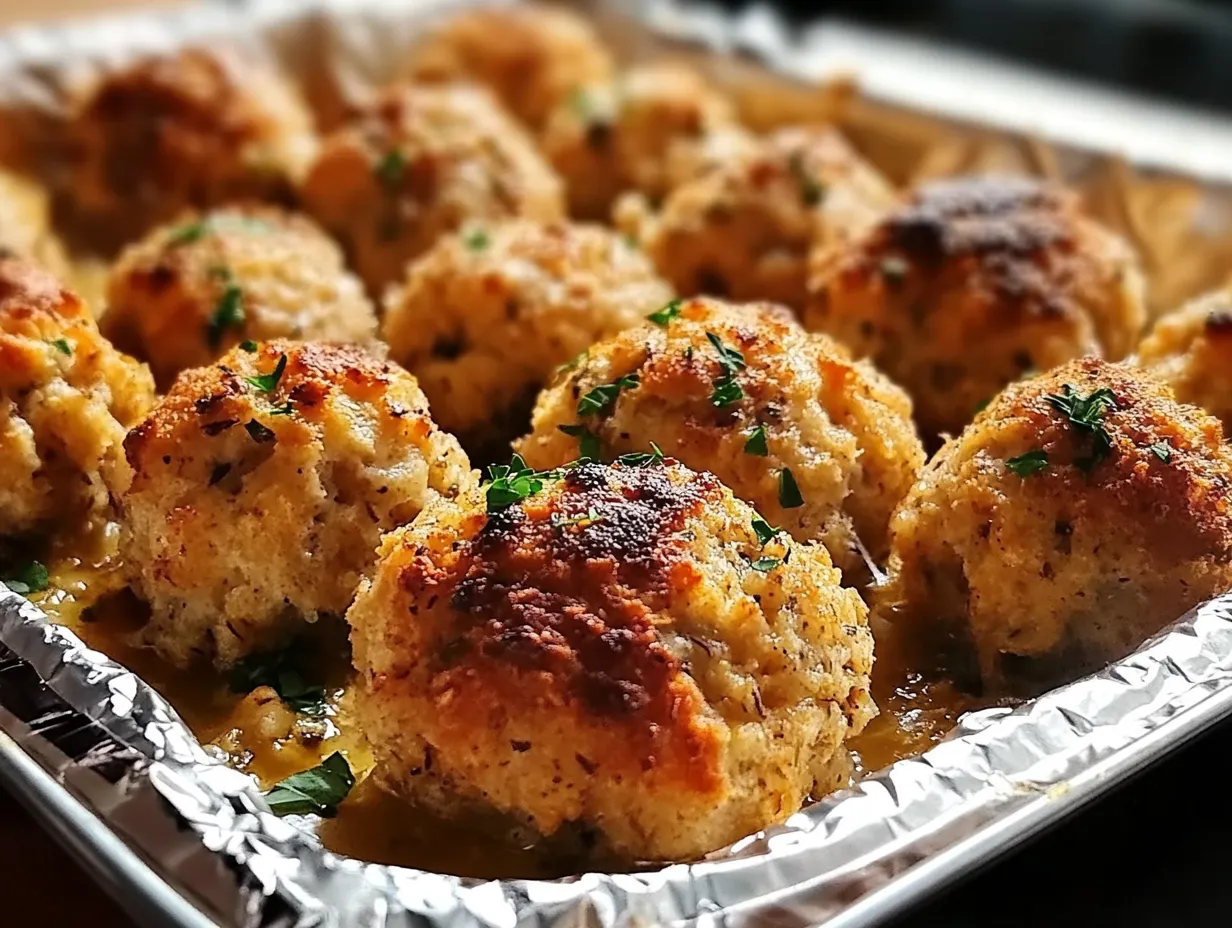



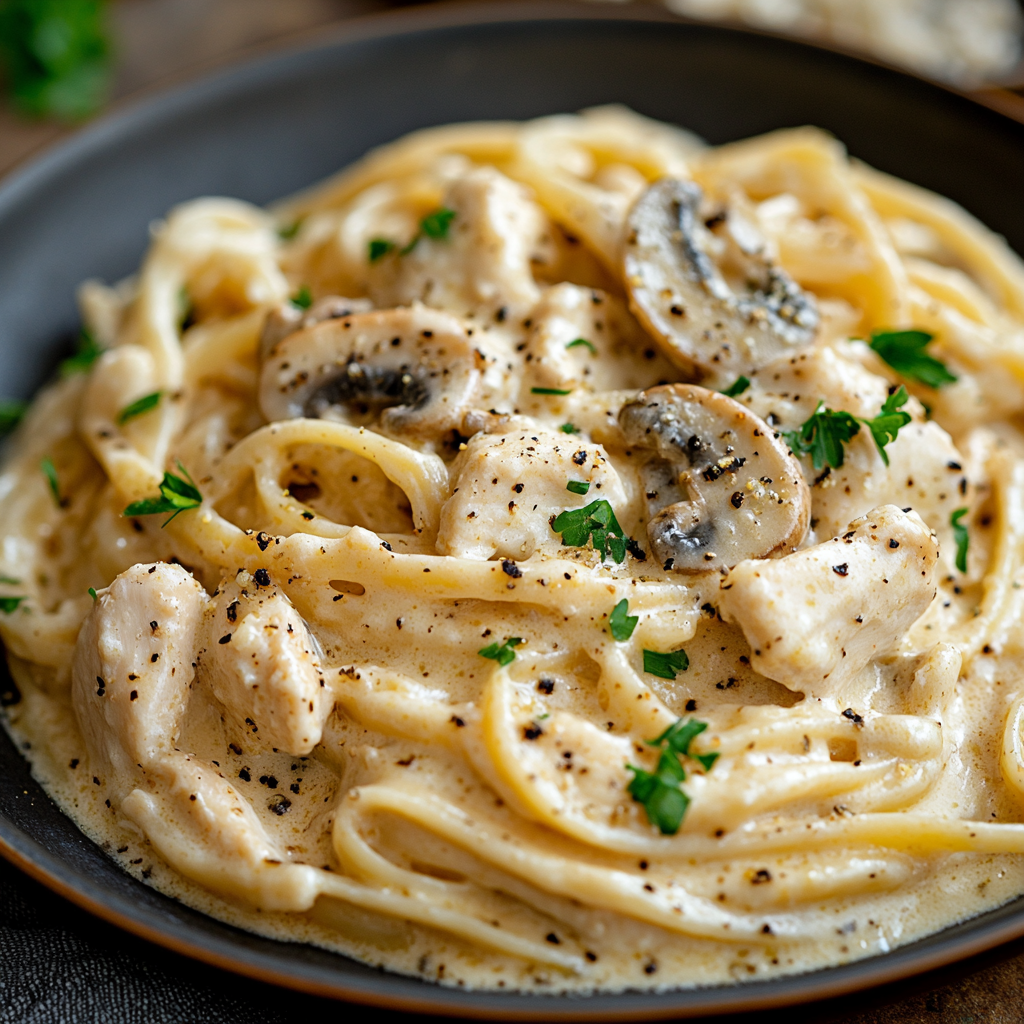


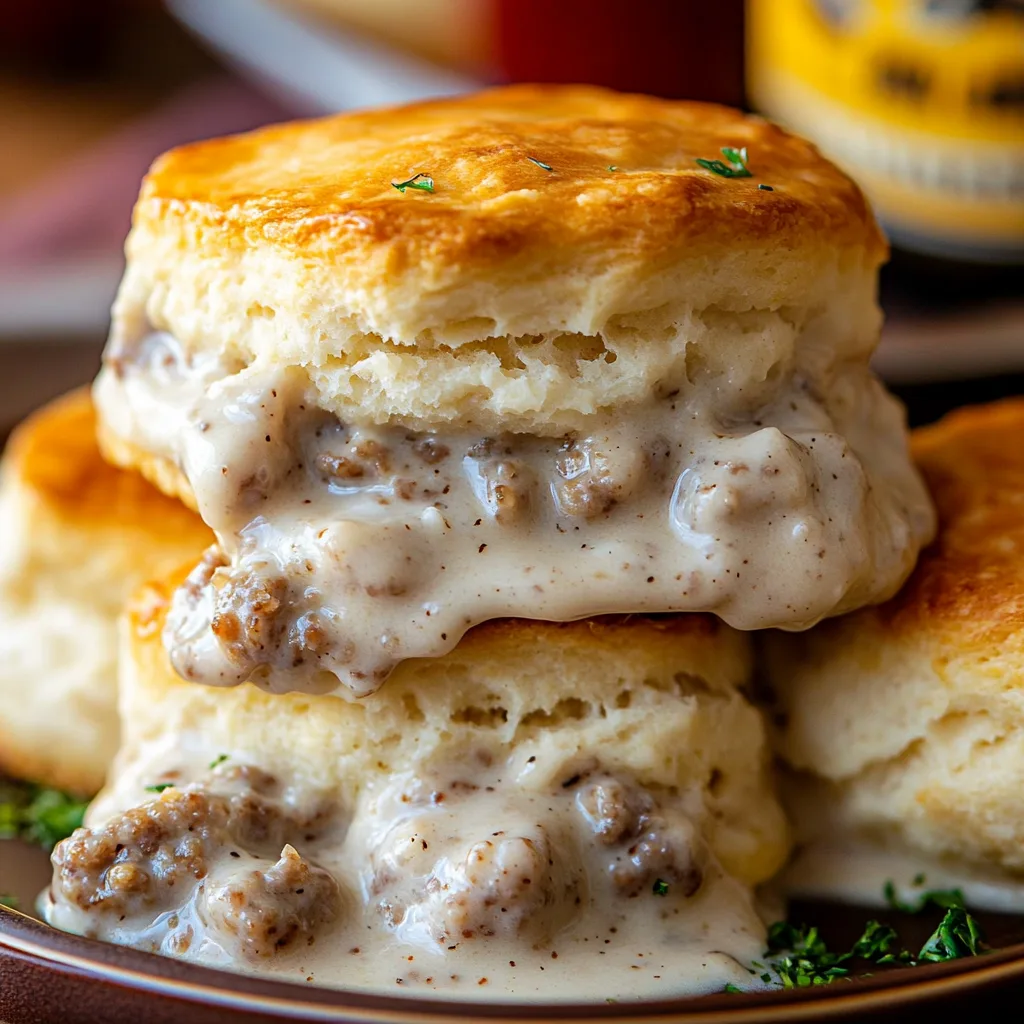

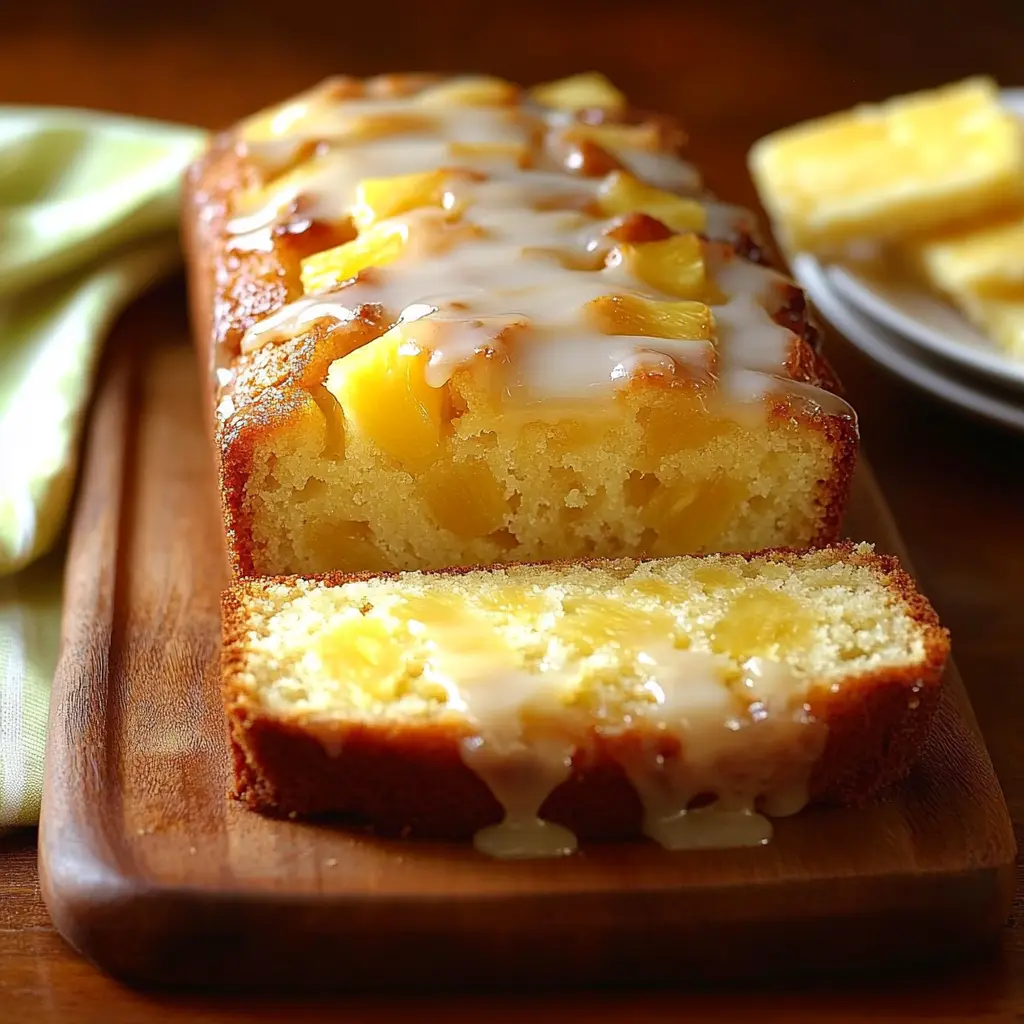
Can I make these and freeze them?